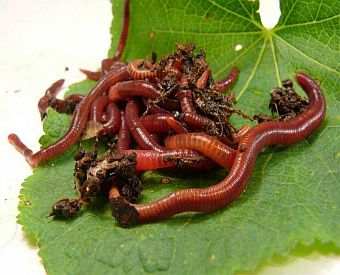Vibrant red wigglers: Their role in reducing waste
Vibrant red wigglers: Their role in reducing waste
Blog Article
Every Little Thing You Required to Understand About Red Wigglers for Composting
Red wigglers, or Eisenia fetida, play an essential function in the realm of composting, changing natural waste into important soil modifications. The procedure of setting up a worm bin and keeping it can posture obstacles.
What Are Red Wigglers?

(red wiggler worms for sale near me)
Belonging To North America, red wigglers are surface-dwelling organisms that prefer moist, cozy environments abundant in decaying raw material. Their diet plan consists mainly of decaying plant product, food scraps, and various other natural debris, which they consume and break down successfully. As they absorb this product, they create nutrient-rich castings that boost dirt fertility.
Red wigglers are hermaphroditic, having both male and female reproductive body organs, and can recreate quickly under ideal conditions. This capability makes them an optimal selection for composting systems, as their populace can increase quickly. Their resilience and flexibility to various settings even more strengthen their significance in lasting waste management techniques. Overall, red wigglers are crucial contributors to the procedure of reusing organic waste right into valuable garden compost.
Benefits of Utilizing Red Wigglers
Making use of red wigglers in composting systems offers many advantages that enhance both the performance of waste administration and the top quality of the resulting compost. These worms, scientifically understood as Eisenia fetida, are specifically effective at breaking down natural issue, transforming kitchen scraps and lawn waste into nutrient-rich garden compost at an accelerated price.
One of the key benefits of making use of red wigglers is their capability to eat big quantities of organic material, often refining their weight in food waste daily. This high usage rate causes much faster decomposition and minimizes the quantity of waste sent to garbage dumps. The castings produced by red wigglers are rich in necessary nutrients, beneficial bacteria, and enzymes, making them an outstanding plant food for gardens and plants.
In addition, red wigglers thrive in a selection of environments, making them adaptable for both interior and exterior composting systems - red wigglers. Their presence in a compost bin assists to freshen the material, preventing smells and advertising a healthy and balanced composting process. In general, employing red wigglers not only adds to reliable waste administration but also sustains lasting gardening practices via the manufacturing of premium compost
(red worms for composting)
Establishing Your Worm Container
To efficiently set up a worm bin, it is necessary to choose an appropriate container that satisfies the requirements of red wigglers while giving a conducive environment for composting. An appropriate container can be made from plastic, timber, or steel, with an ability of at the very least 1 square foot for every pound of worms.
Guarantee the container has appropriate water drainage openings to protect against excess moisture, as red wigglers thrive in a damp, but not waterlogged, environment. red wigglers. The bin ought to likewise be ventilated to offer adequate air flow, stopping anaerobic conditions that might hurt the worms
A suitable place for the worm bin is an awesome, dark area, free from direct sunshine and severe temperature levels, as red wigglers like a temperature level variety of 55 to 77 degrees Fahrenheit.
Before presenting the worms, prepare bed linens products such as shredded paper, cardboard, or coconut coir, which will provide both habitat and food. Dampen the bed linen lightly to create a welcoming setting for the worms. Last but not least, think about putting a lid on the container to keep humidity and reduce pests, while guaranteeing it can be quickly removed for maintenance.
Feeding and Care Standards
Feeding red wigglers is an important aspect of keeping a healthy composting system. These worms thrive on a varied diet plan, primarily made up of organic products such as fruit and vegetable scraps, coffee premises, and crushed eggshells. It is important to stay clear of feeding them meat, dairy products, and oily foods, as these can create undesirable odors and draw in pests.
When presenting food to your worm bin, slice or shred materials right into smaller pieces to facilitate quicker decay. Start with percentages to assess the worms' intake rate, progressively enhancing the amount as they adapt. It is suggested to alternating feeding areas within the bin to motivate thorough mixing and oygenation of the compost.

Troubleshooting Common Issues
Maintaining a thriving worm composting system can sometimes present challenges that call for focus and troubleshooting. Usual problems include an unpleasant odor, which typically suggests overfeeding or the presence of anaerobic conditions. To treat Clicking Here this, lower the amount of food added and make certain proper oygenation by mixing the bedding product.
One more regular problem is the retreat of worms from the container. This can happen due to too much wetness or inappropriate environmental problems. On a regular basis inspect the moisture degrees, going for a damp but not soggy uniformity, and maintain optimum temperature levels in between 60-80 ° F(15-27 ° C )to produce a comfortable environment for your red wigglers.
Bugs, such as fruit flies, can also attack worm bins. red wigglers. To battle this, cover food scraps with a layer of bed linen or shredded paper to deter flies from laying eggs. In addition, guarantee that any food included is fresh and devoid of mold and mildew, which can attract undesirable insects
Last but not least, if your worms seem non-active, look for stress and anxiety elements such as temperature level changes or poor wetness. Resolving these typical concerns will assist maintain a healthy and effective worm composting system.
Final Thought
In summary, red wigglers, or Eisenia fetida, play an important function in lasting waste monitoring via vermicomposting. Correct setup and maintenance of a worm bin, along with adherence to feeding guidelines, guarantee a successful environment that minimizes landfill contributions.
Report this page